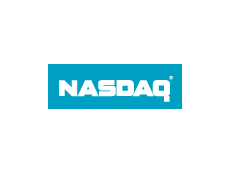
Why ETFs are Some of the Most Cost Efficient Investment Products in the US
Exchange Traded Funds (ETFs) are some of the most cost efficient investment products in the United States, which is making them increasingly attractive to investors.
The asset-weighted average Total Expense Ratio (TER) for ETFs in the US stands at 0.27% or 27 basis points (bps). The cheapest annual fees are on fixed income ETFs, with an average asset weighted TER of 23 bps while alternative ETFs are the most expensive at 98 bps. In comparing ETF and mutual fund average TERs, we find equity ETFs at 23 bps and fixed income ETFs at 23 -- about one third of the cost of mutual funds at 77 bps and 61 bps respectively.
According to the ETFGI Global ETF and ETP Monthly Insights Report, at the end of July 2013, the US ETF/ETP industry had 1,491 ETFs/ETPs with assets of US$1.53 billion from 55 providers on three exchanges. The TERs of individual ETFs and other Exchange Traded Products (ETPs) differed considerably depending on factors such as: the investment objective, benchmark, assets under management, structure of the company managing the ETF/ETP, and sales strategy of the provider.
Understanding the underlying costs of investing in ETFs and ETPs is an important factor in the selection process of whether to use an ETF/ETP rather than another investment product -- and in selecting a specific ETF/ETP.
Annual costs: Like mutual funds, ETFs charge a total expense ratio or annual charges that come directly out of the funds' returns. ETFs' expense ratios are generally lower than those of comparable mutual funds.
Transaction costs: Investors using ETFs will typically pay commission on buy and sell transactions although some online brokers offer commission-free trading on some ETFs. ETF trades incur a bid-ask spread built into the market price. The spread varies with each ETF, so you'll need to consider the impact this cost may have on your investment.
Index ETFs tend to be tax-efficient because of the low-turnover in the underlying portfolios and their unique in-kind creation and redemption process.
There are other critical factors beyond TERs and costs to consider, such as the benchmark being tracked, replication strategy, product structure (ETF, exchange traded note (ETN), exchange traded vehicle (grantor trust ETV) etc), asset under management, performance, on exchange liquidity, and bid/ask spreads, etc..
Schwab, with a 7.2 bps average overall TER across their 15 products and $13.3 billion in assets, has the lowest overall TER when compared to the top 20 ETF/ETP providers in the US ranked by assets. Vanguard ranks 2nd with an overall TER of 11.5 bps in their 67 ETFs with $294 billion in assets. SPDR ranks 3rd with 20.7 bps overall TER in their 123 ETFs/ETPs with $364 billion in assets, followed by 4th-ranked iShares and its overall TER of 31.5 bps in their 295 ETFs/ETPs with $603.7 billion in assets. Direxion at 94.6 bps has the highest average overall TER across their 50 ETFs/ETPs with $6.4 billion is assets while ProShares at 93 bps has the 2nd highest overall TER in their 141 ETFs/ETPs with $24.6 billion in assets.
Assets invested in ETFs/ETPs listed in the US hit a new high of $1.53 trillion at the end July 2013. Being cost efficient is one of the reasons we see investors increasingly using ETFs/ETPs. A record amount of net new asset flows of $41.13 billion were gathered by US listed ETFs/ETPs in July, beating the prior record of $37.76 billion set in September 2012. Year to date net new inflows of US$115.84 billion are significantly higher than the $91.95 billion at this time last year.
http://www.nasdaq.com/article/why-etfs-are-some-of-the-most-cost-efficient-investment-products-in-the-us-cm268638#ixzz2cV0si590
